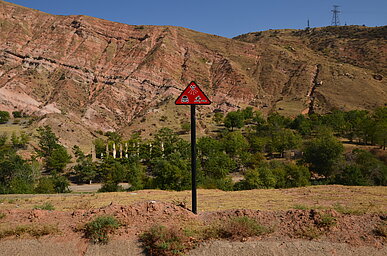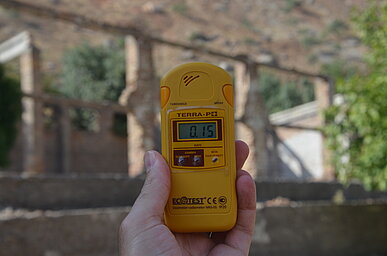Precarious Half-Lives: Co-habiting with Radiation and Ignorance in Mailuu-Suu, Kyrgyzstan


Mailuu-Suu, a former uranium mining town in southern Kyrgyzstan, to this day deals with the legacy of the Soviet military-industrial complex—and in particular of the Soviet nuclear programme. Between 1946 and its closure in 1968, Mailuu-Suu’s uranium mining and milling combine produced 10,000 tons of yellowcake, a partially refined form of uranium that is used as fuel in nuclear power stations and constitutes an intermediate step in the production of nuclear weapons. But the combine also generated three million cubic meters of radioactive residues, which were piled in slag heaps in the open air or were buried in tailings dumps scattered around the mountainous area surrounding the town. Consequently, earthquakes, landslides, floods, and mud-torrents have over the years resulted in a significant volume of heavy metals and radionuclides with long half-lives contaminating groundwater and even seeping into the Mailuu-Suu River that flows through the town. Physicians agree that it is probably as a result of these conditions that Mailuu-Suu records unusually high rates of birth defects, miscarriages, and stillbirths, as well as a number of cancer patients two times the national average.
This project explores the various processes of environmental (un)knowing that inform the locals’ living in a town that, despite still ongoing remediation work, continues to constitute a health hazard. In this direction, the project critically approaches the knowledge transfer mechanisms and practices initiated by environmental NGOs and international organisations, arguing that the personal considerations of those tasked with knowledge dissemination lead to the recalibration of scientific norms and reinterpretation of risks, which in turn make environmental and health hazards “acceptable” and the situation “normal.” The project also shows that normalisation is sought by the locals themselves, as the adverse socio-economic conditions brought by the Soviet Union’s dissolution and the town’s subsequent de-industrialisation hinder most of them from leaving Mailuu-Suu. Locals then turn to their own convictions and religious beliefs to find coping mechanisms such that help them reinterpret their contaminated surroundings and even swap their “precarious half-lives” for a semblance of normal life.
The history of Mailuu-Suu is also an important part of the project. Both the town’s founding in the early 1940s and its transition from mining town to industrial centre were covered by secrecy and involved the institutionalisation of regimes of ignorance that kept most locals in the dark. By delving into archival material and collecting oral history interviews with former uranium miners, the project sheds light onto the long history of environmental injustice that has characterised not only Mailuu-Suu, but in fact all Central Asian uranium mining towns, thus providing a snippet into uranium production in the Soviet Union.